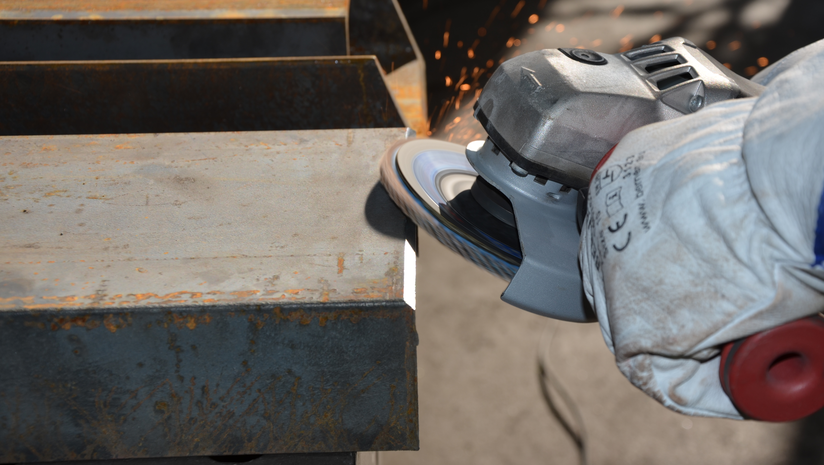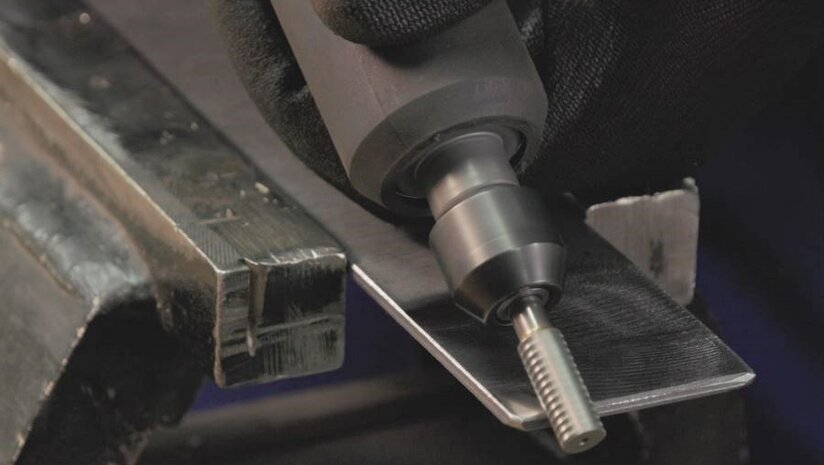
Beveling
If two workpieces are to be welded together, the edge of the workpieces must first be broken by a beveled surface. This is done by machining. The result is a chamfer, also known as a bevel.
What is beveling and
why is it important?
If two workpieces are to be welded together, the edge of the workpieces must first be broken by a beveled surface. This is done by machining. Or in other words, a space is created to accommodate the individual welding layers through which the workpieces are joined together. The bevel can have different shapes. The V-joint, the double V-joint, and the Y-joint are the most common shapes.
Which tool is used for beveling?
The position of the weld, the material of the workpiece, and the types of drives available - the choice of the right tool depends on various factors.
If an angle grinder is available, the beveling can be done with sulfur- and iron-free Osborn flap discs. Flap discs with a conical or straight shape are available. The angle on the workpiece determines the shape of the flap wheel.
If a workpiece made of non-ferrous metal is to be beveled, we recommend an abrasive cloth with a cooling bond as it reduces blue tarnish.

Pictured: Beveling with an Osborn flap disc.
If a straight grinder or air grinder is available, chamfering can be done with carbide burrs. The milling head is made of tungsten carbide-cobalt, the shank of tool steel. Different head shapes and toothings ensure that there is the right solution for every application.
For chamfering, burrs with cross serration (Z6) are the best choice. It ensures high stock removal in a short time. If the surface quality is important, a single tooth (Z3) is recommended. In the shipyard sector, the special shipyard toothing is often used. Compared to the Z6 toothing, it has a 30% higher material removal rate.

Camfering with a carbide burr.
Products for
Beveling.

Pure Grey China Bristle Oval Sash Brush
Exceptional stiffness and taper for spreading oil-base paints, enamels, stains, shellacs and epoxy coatings. Premium grey China bristle fill with plastic handle.

Parts Cleaning Brush
Handy tool for cleaning motor parts and more. Available with choice of fill. Wood or plastic handle.

Economy Chip Brush
Affordable chip brush available in several varieties of fill with choice of wood or plastic handle.

Black Polyester Brush
Small, versatile brush for use with latex and oil-base paints. Plastic beaver tail handle.

Camel Hair Round Lettering Marking Brush
Flexible, natural hair fill with rounded trim. Wood handle.

Red Sable Artist's Brush
Soft, round natural fill with tapered wood handle.

Shoe Handle Wire Scratch Brush
Durable wire and hardwood constructed scratch brush at an inexpensive price point. Available in a variety of wire fill materials to efficiently clean and prepare surfaces.

Plater's Fiber Brush
Featuring a blend of natural Tampico and Palmyra fibers and a hardwood block handle, Osborn’s well-crafted Plater’s Fiber Brush is ideal for medium to heavy duty wet or dry cleaning applications during the plating and metal finishing process.

Small Cleaning Scratch Brush
Available in variety of fill materials with choice of angled or curved back, Osborn Small Cleaning Scratch Brushes effectively clean and prepare small surface areas. Fill is staple-set for prolonged brush life.

Deck Scrub Brush
Heavy duty Osborn deck brush with hardwood block and built-in squeegee.

Pointed End Scrub Brush
Solid hardwood block designed with grooved, shaped sides and white Tampico fill for targeted wet or dry surface scrubbing.

Circular Polypropylene Scrub Brush.
Featuring premium-quality materials and construction, Osborn's Circular Polypropylene Scrub Brushes are designed for long-term use. Brushes are densely filled with Osborn's long-wearing polypropylene material, and each tuft is firmly anchored into a marine-type block. Designed for use on off-hand equipment as well as automatic machinery.